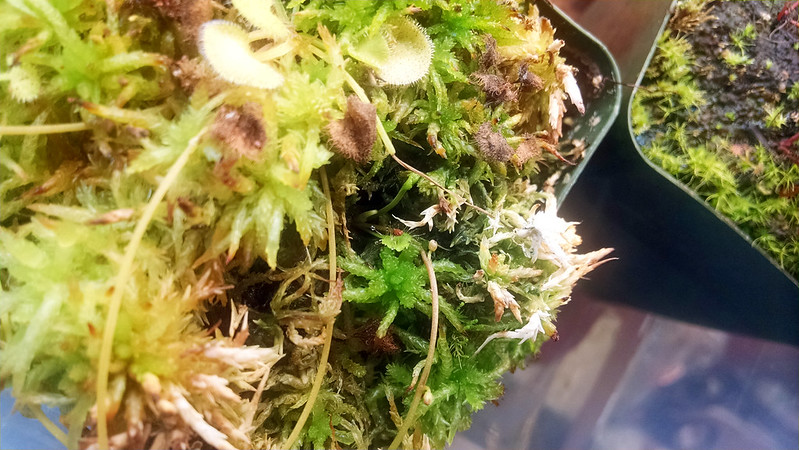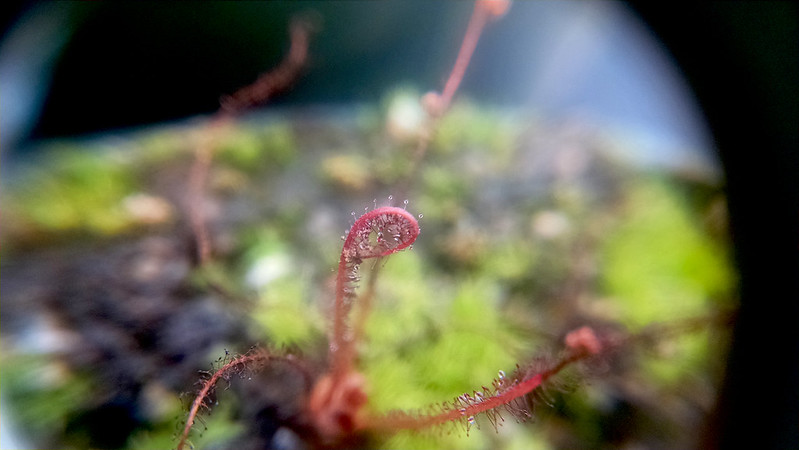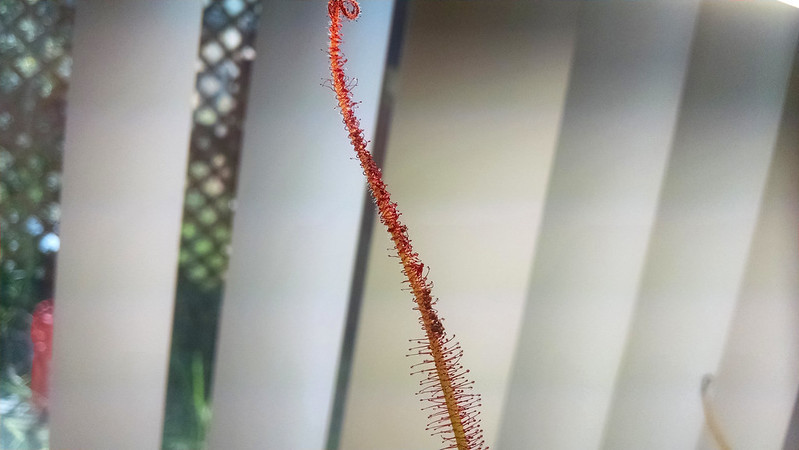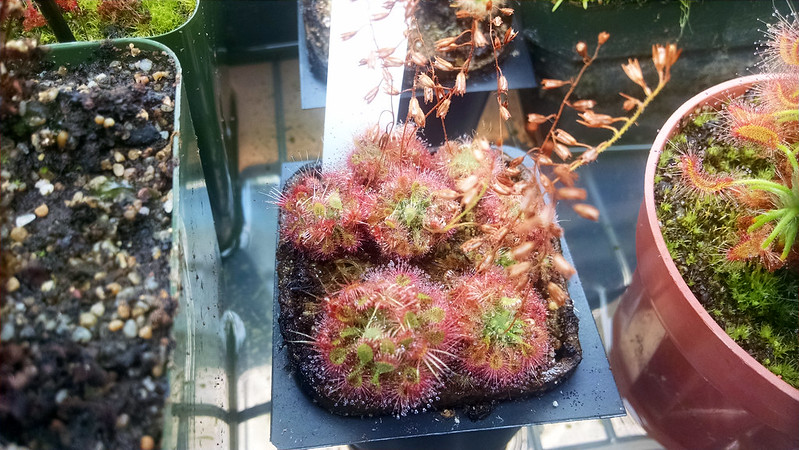A note: I am still working on changing up my photo hosting, but I didn't want to put off updating the blog too much. I'll just migrate the new images over.
I fed most of my collection a few day ago.
 |
| Drosera alicae eating heartily. |
I've described how I feed my sundews in detail in an
earlier post, but in brief I use beta fish food, grind it up in a little mortar and pestle, and apply it in a couple of different ways:
- For rosetted species (like Drosera aliciae and Drosera burmannii) I usually just pinch some up with my fingers and sprinkle it onto the plants.
- For plantlets, seedlings, and certain species (like Drosera spiralis and Drosera filiformis) I dip a toothpick in some water, wipe off the excess moisture, and then use the damp toothpick to pick up and apply the ground fish food.
- For larger species that have longer petioles (like Drosera anglica or Drosera capensis) I will mix the ground fish food with a tiny amount of water, just enough to form a dense paste. I then apply chunks to the laminae with a toothpick. Sometimes the damp toothpick method above will end up with a bit of this sort of paste on the tip, which I can then use.
 |
| Little Drosera prolifera plantlet emerging from the moss. |
I try to feed my plants every 2 weeks at least, but lately it's been more like once a month. That's still not too shabby, but regular feeding really speeds up growth and keeps the sundews healthy.
 |
| Exceptionally hungry Drosera filiformis. |
I love seeing the plants respond to feeding. Some are very dramatic, like the
D. filiformis above. I didn't even know that the whole leaf could roll up like that! It's certainly not very common. Of course, sometimes the feeding process just makes the plants look straggly, like on this
Drosera spiralis leaf.
 |
| Silly, string looking leaf on D. spiralis. |
However, it's always nice knowing they will be stronger and healthier once new growth comes in. Plus, feeding helps out in
flowering, and I want to see a show from this guy!
Feed your sundews! They love it.
 |
| Lots of Drosera allantostigma munching away. |





Nice photos, and thanks for explaining your feeding techniques too! When I had a bunch of capensis seedlings, their growth just exploded when I fed them mushy betta fish pellets. :)
ReplyDeleteThe difference between fed and unfed is huge, especially with seedlings and young plantlets. I also notice my plants get smaller leaves if I'm not able to feed them, especially if they're blooming. Sundews get pretty hungry.
Delete